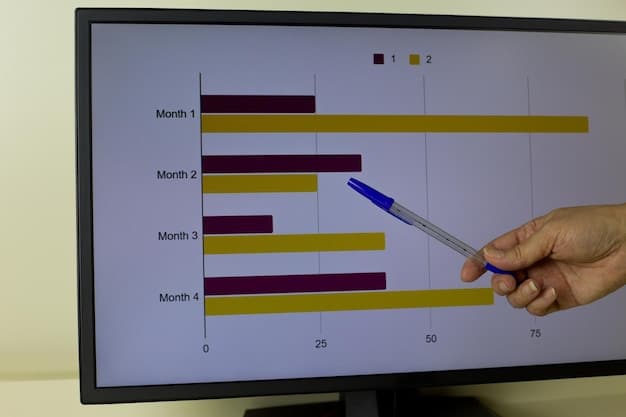US Streaming Service Data Usage: Smart Saving Tips

Advertisements
US streaming service data usage can be worrying for families. Understanding how it’s calculated helps reduce costs.
Different services use varying amounts of bandwidth daily. Knowing this helps avoid overage charges and frustration.
With smart tips, you can optimize data consumption. The goal is streaming smoothly without paying more.
Anúncios
Understanding Data Usage in Streaming
Data usage refers to internet transfer during streaming. It includes movies, TV, music, and even games.
Knowing how it is measured is essential. Factors like quality and service matter a lot.
By learning the basics, you manage usage better. Awareness prevents unexpected overages later.
Anúncios
How Data Usage is Measured

Data is measured in gigabytes per hour. Streams move from servers to your device.
Every transfer counts against your monthly limit. Higher quality means more data consumed.
Monitoring helps balance enjoyment with restrictions. Awareness improves control of usage.
Factors Influencing Data Usage
Several factors can impact data usage while streaming. Understanding these can help you make informed decisions about your streaming habits. It’s important to know what influences your consumption.
Video quality, streaming service, audio quality, and content type are key. Higher resolutions use more data, and services compress differently. Movies or sports also demand more bandwidth.
By knowing these details, you can make smarter choices. Managing quality and settings helps reduce overages. Awareness is the first step in controlling your usage effectively.
Data Usage by Popular Streaming Services
Streaming platforms differ in how much data they use. Compression, resolution, and service design play big roles. Knowing this helps match usage with your data plan.
Netflix, YouTube, Hulu, and Disney+ all show variation. Each has unique consumption levels at different qualities. This impacts how much data you’ll spend per hour.
With this knowledge, you can balance quality and cost. Choosing the right settings protects your bandwidth. Informed streaming decisions save money and avoid surprises.
Netflix
Netflix is widely used, offering movies and shows. It allows flexible settings for resolution and data control. Each option aligns with different devices and plans.
Low quality consumes only 0.3 GB per hour. SD uses 0.7 GB, HD jumps to 3 GB, and 4K reaches 7 GB. The difference is significant across viewing levels.
This means your screen and internet plan matter. Adjusting resolution can keep usage manageable. Netflix adapts well to various consumer needs.
YouTube
YouTube data usage varies more than most. Resolution settings drive how much data is consumed. It ranges widely from low to very high.
At 240p, usage is about 0.3 GB hourly. 360p is 0.4 GB, 480p is 0.7 GB, and HD goes higher. 1080p uses 3 GB, while 4K reaches 7 GB.
Understanding these jumps helps limit consumption. Viewers can choose based on device and connection. Adjusting resolution can prevent exceeding data limits.
Hulu
Hulu is similar to Netflix in usage. It offers SD, HD, and 4K options. Each has different requirements for data and speed.
SD consumes about 0.6 GB per hour. HD uses 3 GB, while 4K rises to 7 GB. These levels affect what you can stream affordably.
Selecting the right resolution is key. Lowering quality helps save data effectively. Balancing enjoyment with data caps is important.
Disney+
Disney+ delivers high-quality visuals across formats. It adjusts consumption based on chosen settings. Like others, it offers SD, HD, and 4K.
SD uses 0.7 GB per hour, a light option. HD consumes about 2 GB, while 4K ranges 6–7 GB. These figures guide decisions on streaming.
Choosing the right setting saves bandwidth. Viewers can avoid excess charges by adjusting quality. Disney+ offers flexibility for all types of users.
Impact of Streaming Quality on Data Consumption
Streaming quality is the most direct factor in usage. Higher settings always consume more data. Lowering quality reduces consumption significantly.
SD streams at lower resolution with minimal usage. HD improves visuals but doubles or triples data needs. The choice depends on both device and plan.
4K Ultra HD is the most demanding option. It brings stunning detail but uses heavy bandwidth. This setting works best for fast internet.
Standard Definition (SD) vs. High Definition (HD)
SD is efficient, using fewer gigabytes hourly. It’s ideal for limited data plans and smaller screens. Lower quality still provides watchable results.
HD consumes more bandwidth per hour. It offers sharper, clearer viewing for modern devices. However, it can drain data plans faster.
Choosing between them requires balance. SD saves data while HD enhances experience. Evaluate based on your usage allowance.
4K Ultra HD Streaming
4K streaming delivers unmatched clarity. It shows the sharpest details and vibrant visuals. This setting transforms the viewing experience.
The downside is heavy data use. At 7 GB per hour, it can quickly deplete caps. High-speed internet is necessary for smooth playback.
Use 4K only when supported. Both device and plan should be prepared. Otherwise, consider HD as a safer choice.
Tips to Minimize Streaming Data Usage
Reducing data usage is simple with adjustments. Many services offer built-in options. These changes help balance quality with efficiency.
Lowering resolution is the easiest method. It cuts usage dramatically without losing all clarity. Most platforms allow manual control of quality.
Downloading content is another strategy. Watching offline avoids extra data costs. Pairing with Wi-Fi ensures savings on mobile plans.
Adjust Video Quality Settings
Most platforms allow resolution control. Lowering settings reduces gigabytes consumed. It’s the most direct way to save data.
Switching from HD to SD can cut usage by more than half. Adjusting per device makes it practical. Smaller screens need less resolution anyway.
Consistently managing settings helps avoid overages. It allows balance between enjoyment and cost. Make adjustments based on your plan.
Download Content for Offline Viewing
Downloads let you save shows on Wi-Fi. Watching later uses no mobile data at all. This is efficient for heavy streamers.
Platforms like Netflix, Hulu, and Disney+ support it. Movies and series can be stored directly on devices. Playback then consumes nothing.
This method prevents surprises on data bills. It is especially useful for travel. Offline viewing is a smart way to conserve.
Monitor Data Usage
Tracking consumption is vital for control. ISPs and smartphones offer usage tools. Regular checks prevent unwanted overages.
Setting alerts keeps you aware. Notifications warn as you approach your limit. This allows time to reduce streaming quality.
Awareness ensures better management. It helps avoid sudden charges from providers. Monitoring is a protective step.
Use Wi-Fi Whenever Possible
Streaming on Wi-Fi avoids mobile usage. Home or public Wi-Fi can handle heavier demand. It prevents overages on data plans.
Most services stream smoothly over strong Wi-Fi. Downloading content works best this way too. Large files finish quicker on faster networks.
Prioritizing Wi-Fi is essential for savings. It maintains performance while avoiding costs. Always switch when available.
Understanding Data Caps and Overage Charges
ISPs often impose monthly data caps. Exceeding them leads to added fees. Some even throttle speeds as penalties.
Caps vary by provider and region. Comcast has 1.2 TB, AT&T ranges 150 GB–1 TB. Verizon often offers no caps in certain areas.
Avoiding charges means monitoring closely. Tracking usage and setting alerts helps. Adjusting quality is another safeguard.
What are Data Caps?
Data caps limit how much you can use. They are monthly restrictions enforced by ISPs. Once exceeded, users may face penalties.
Caps are measured in gigabytes. Reaching them often triggers fees or throttling. They affect how much you can stream.
Knowing your cap is critical. It influences resolution and platform choices. Manage habits based on allowance.
Common Data Cap Policies Among ISPs
Comcast Xfinity enforces a 1.2 TB cap. Users may purchase unlimited plans if needed. This provides flexibility for heavy streamers.
AT&T applies between 150 GB and 1 TB. It depends on the type of connection offered. Users must confirm plan details.
Verizon Fios usually has no limits. However, this may vary by area. It’s best to verify your specific plan.
How to Avoid Overage Charges
Monitor usage frequently through apps. Alerts can warn before caps are reached. This proactive step prevents surprises.
Reducing resolution saves significant bandwidth. Downloading on Wi-Fi also avoids costs. These habits are simple but effective.
Avoiding overages protects your budget. Staying aware ensures smoother streaming. Smart management leads to fewer issues.
Optimizing Your Home Network for Streaming
Optimizing your network improves quality. It also reduces unnecessary data use. A strong setup avoids buffering and interruptions.
Upgrading hardware ensures better performance. Old routers may limit your speeds. Modern devices handle streaming more efficiently.
Signal strength also matters for Wi-Fi. Weak connections increase consumption. Boosting signals stabilizes performance.
Upgrading Your Router
Older routers limit network speed. They may bottleneck streaming performance. Upgrading ensures smoother playback.
Newer routers optimize data transfer. They reduce waste and support higher speeds. This helps manage heavy usage.
Investing in a quality router pays off. It improves stability and saves bandwidth. Devices benefit from the upgrade.
Improving Wi-Fi Signal Strength
Weak Wi-Fi causes buffering loops. These use more data unnecessarily. Fixing signal strength prevents this.
Better placement of the router helps. Using extenders can also improve reach. Strong signals keep playback steady.
A stable connection uses fewer retries. This reduces bandwidth demands overall. Improved signals equal smoother streaming.
Using Ethernet Cables for Streaming Devices

Ethernet offers direct connections. They are more stable than Wi-Fi signals. Wired links avoid interference issues.
This reduces buffering and repeated loads. Consistency lowers total data usage. Stability makes streaming smoother.
Devices like smart TVs benefit most. Connecting directly boosts reliability. It ensures best possible performance.
Prioritizing Streaming Traffic (QoS)
QoS lets routers assign priority. Streaming can be given more bandwidth. This improves video consistency.
With priority, buffering is reduced. Devices stream without interruptions. Experience is smoother overall.
Enabling QoS is simple on many routers. It’s a practical way to enhance quality. Streaming becomes seamless and efficient.
| Key Point | Brief Description |
|---|---|
| 🎬 Video Quality | Higher quality consumes more data; adjust settings to lower resolutions when needed. |
| 📶 Wi-Fi Usage | Always prefer Wi-Fi over cellular data to avoid data cap issues and reduce costs. |
| 📊 Data Monitoring | Track your data usage using tools from your ISP or smartphone; set alerts to avoid surprises. |
| ⬇️ Offline Downloads | Download content in advance via Wi-Fi to enjoy offline without using cellular data. |
FAQ
▼
4K streaming typically uses about 7 GB of data per hour. This can vary slightly depending on the streaming service and the specific content being streamed.
▼
On Netflix, go to Account Settings, then Playback Settings. Here, you can adjust your data usage per screen, allowing you to control how much data Netflix uses.
▼
To reduce streaming data usage on a mobile device, lower the video quality settings, download content on Wi-Fi for offline viewing, and monitor data usage regularly.
▼
No, data usage rates vary between streaming services due to differences in compression algorithms and video quality settings. Some services offer more efficient encoding than others.
▼
Yes, using a VPN can increase your data usage slightly due to the encryption overhead. However, the increase is usually minimal compared to the total data used for streaming.
Conclusion
In conclusion, managing US streaming service data usage is vital for avoiding overage charges and maintaining a seamless streaming experience.
By understanding data usage metrics, adjusting video quality, leveraging offline downloads, and optimizing your home network, you can make informed decisions to stay within your data limits.
This way, you can continue enjoying your favorite content without interruptions or unexpected overages.





